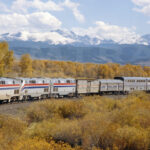Amtrak Connections are Risky.
When I book train travel for myself, I seldom include connections from one Amtrak train to another. And, when asked by other rail travelers about connections, my response almost always is, “You’ll probably be OK, but if something happens on the day your traveling, you’re screwed.”
Instead of taking a chance—even though the odds are in my favor—I’ll almost always overnight and take the next day’s train.
The problem with connections is that they depend on the first train being on time or not being too late. As we all know, Amtrak’s long-distance trains run on track owned by the freight railroads and they are supposed to give “preference” to Amtrak trains. Very often they don’t, of course, and as a result, Amtrak’s on-time performance is lousy . . . and getting worse.
Just how bad is it? In Amtrak’s most recent annual report they say that in their Fiscal Year 2018, about 57% of their long distance trains arrived late. The year before, Amtrak says, 55.3% of the long-distance trains were late. The trend is clearly headiing the wrong direction.
And guess what? It’s even worse than it appears because arriving trains have a grace period that varies according to the length of its route. For instance, a train traveling over a 500-mile-long route has a grace period of 30 minutes. That means it can arrive 29 minutes late and still be considered “on time”.
So when considering whether or not to try making a connection, remember that almost half of all long-distance passenger trains are running late while thousands of Chinese toaster ovens get to their destinations and onto store shelves on time.
NEXT: What’s being done to fix things.



